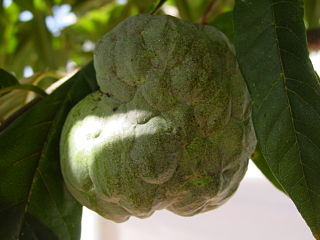
The Annonaceae are a family of flowering plants consisting of trees, shrubs, or rarely lianas commonly known as the custard apple family or soursop family. With 108 accepted genera and about 2400 known species, it is the largest family in the Magnoliales. Several genera produce edible fruit, most notably Annona, Anonidium, Asimina, Rollinia, and Uvaria. Its type genus is Annona. The family is concentrated in the tropics, with few species found in temperate regions. About 900 species are Neotropical, 450 are Afrotropical, and the remaining are Indomalayan.
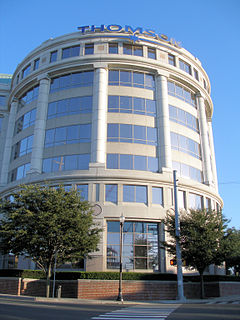
The Thomson Corporation was one of the world's largest information companies. It was established in 1989 following a merger between International Thomson Organisation Ltd (ITOL) and Thomson Newspapers. In 2008, it purchased Reuters Group to form Thomson Reuters. The Thomson Corporation was active in financial services, healthcare sectors, law, science and technology research and tax and accounting sectors. The company operated through five segments : Thomson Financial, Thomson Healthcare, Thomson Legal, Thomson Scientific and Thomson Tax & Accounting.
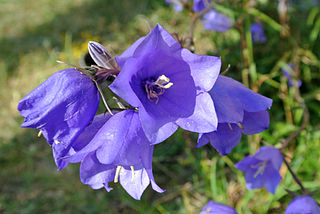
Campanula is one of several genera of flowering plants in the family Campanulaceae commonly known as bellflowers. They take both their common and scientific names from the bell-shaped flowers — campanula is Latin for "little bell".

Sir Charles Wyville Thomson was a Scottish natural historian and marine zoologist. He served as the chief scientist on the Challenger expedition; his work there revolutionised oceanography and led to his knighthood.

HMS Challenger was a steam-assisted Royal Navy Pearl-class corvette launched on 13 February 1858 at the Woolwich Dockyard. She was the flagship of the Australia Station between 1866 and 1870.
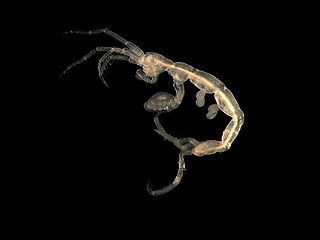
Caprellidae is a family of amphipods commonly known as skeleton shrimps. Their common name denotes the threadlike slender body which allows them to virtually disappear among the fine filaments of seaweed, hydroids and bryozoans. They are sometimes also known as ghost shrimps. Caprellidae contains 88 genera in three subfamilies.

The Wyville Thomson Ridge is a bathymetric feature of the North Atlantic Ocean floor ca. 200 km in length, located between the Faroe Islands and Scotland. The ridge separates the Faroe–Shetland Channel to the north from the Rockall Trough to the south. Its significance lies in the fact that it forms part of the barrier between the colder bottom waters of the Arctic and the warmer waters of the North Atlantic.
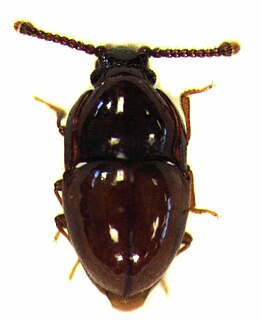
Cryptophagidae is a family of beetles with representatives found in all biogeographic realms. Members of this family are commonly called silken fungus beetles and both adults and larvae appear to feed exclusively on fungi although in a wide variety of habitats and situations, such as rotting wood and shed animal fur and feathers. These beetles vary from about 1 to 11 millimeters long, and usually have an oval body shape with a slight "waist".
Janolus is a genus of small to large sea slugs, or more accurately nudibranchs, marine gastropod mollusks, in the family Proctonotidae. The name Janolus is derived from the two-headed god Janus, in ancient Roman mythology.

Sir William Abbott Herdman FRS FRSE FLS was a Scottish marine zoologist and oceanographer.
Rudolf von Willemoes-Suhm was a German naturalist who served aboard the Challenger expedition.
Metzgeria is a genus of sea snails, marine gastropod mollusks in the family Ptychatractidae.
Poa novarae is a species of flowering plant in the family Poaceae (grasses), native to Saint Paul Island. It was first described by Heinrich Wilhelm Reichardt in 1871.
Aeginina longicornis, the long-horned skeleton shrimp, is a species of amphipod in the family Caprellidae. The species is commonly found in the North Atlantic Ocean and provides extended parental care for their offspring, similar to other peracarid species.
Primnoeides is a genus of Cnidaria in the family Primnoidae.

Fucellia is a genus of seaweed flies in the family Anthomyiidae. There are at least 20 described species in Fucellia.
Mosillus is a genus of shore flies in the family Ephydridae. There are about 16 described species in Mosillus.
Dimecoenia is a genus of shore flies in the family Ephydridae. There are about 18 described species in Dimecoenia.
Hecamede is a genus of shore flies. There are about 16 described species in Hecamede.










